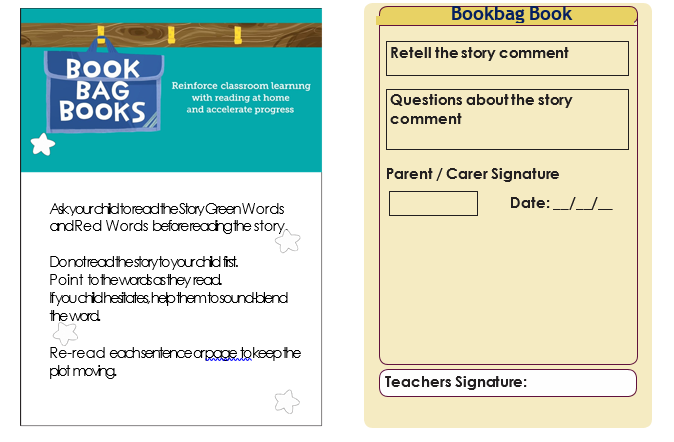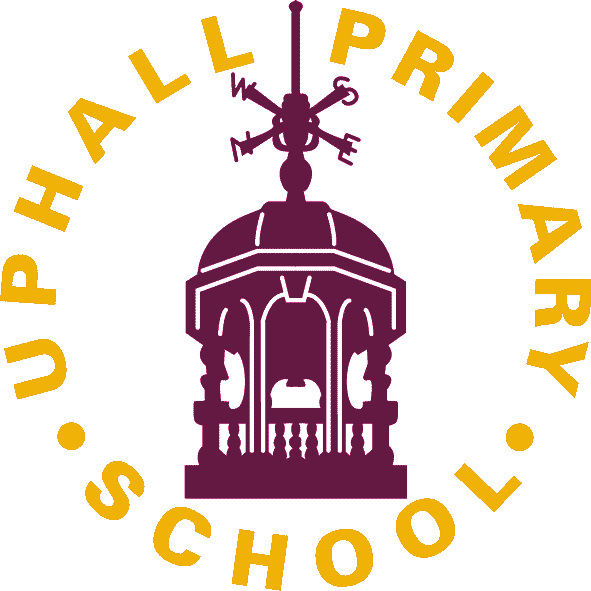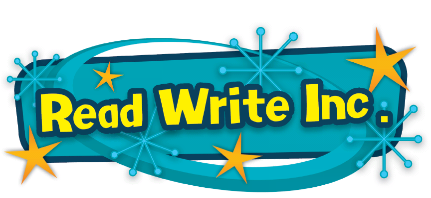
Curriculum Intent: Read Write Inc. Phonics
“Teach a child to read and keep that child reading and we will change everything. And I mean everything” Jean Winterson. This quote epitomises the intent of the Read Write Inc. Programme at Uphall Primary School.
We passionately believe that with the right support, all children can and will learn to read. Children who read regularly, or are read to regularly, have the opportunity to open the doors to so many different worlds! More importantly, reading will give them the tools to become independent life-long learners.
We can achieve this together through:
- Read Write Inc, a programme to help to your child read at school
- Encouraging children to develop a love of books by reading to them daily, at home and at school
- Giving children access to a wide range of books at school and at home
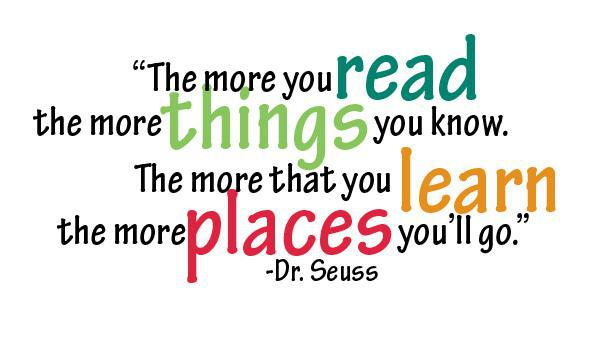
Online resources available
Parent Workshop Resources
Parents – Ruth Miskin Literacy
https://facebook.com/miskin.education
What is the Read Write Inc. Phonics Programme?
The Read Write Inc (RWI) Phonics Programme enables our children to learn to read and write effectively and quickly by:
- decoding letter-sound correspondences quickly and effortlessly, using their phonic knowledge and skills;
- reading ‘common exception words’ on sight;
- understanding what they read;
- reading aloud with fluency and expression;
- spelling quickly and easily by segmenting the sounds in words;
- acquiring good handwriting.
Who is the Read Write Inc. Phonics Programme for?
- children in Year R to Year 2 who are learning to read and write – Nursery children are exposed to the initial concepts of the programme through the use of ‘Fred Talk’;
(staff segment simple instructions verbally – ‘s-i-t’-, blending – saying the whole word – if children cannot);
- any children in Years 3, 4, 5 and 6 who need to catch up rapidly.
How will RWI be assessed?
In order for all children to be successful, we assess them each half term and place them in a group that is matched to their ability. We are constantly informally assessing the children to make sure that they are at the ‘Goldilocks spot’ where the books they read are neither to easy nor too hard.
Nursery children
When appropriate, children will be introduced to the initial sounds.
Nursery children love Nursery Rhymes. There are some great interactive Nursery Rhymes on the following website for your Nursery child to enjoy: https://supersimple.com/super-simple-songs/
Reception children
In Reception all children will learn how to ‘read’ the sounds in words and how those sounds can be written down.
Reading
The children:
- learn 44 sounds and the corresponding letters/letter groups using simple picture prompts – see below
- learn to read words using Fred talk and sound blending
- read from a range of storybooks and non-fictions books matched to their phonic knowledge
- work well with partners
- develop comprehension skills in stories by answering ‘Find It’ and ‘Prove It’ discussion questions
Writing
The children:
- learn to write and form the letters/letter groups which represent the 44 sounds with the help of fun phrases
- learn to write words by using Fred Talk
- learn to build sentences by practising sentences out loud before they write
Talking
The children
- They work in pairs so that they:
- answer every question
- practise every activity with their partner
- take turns in talking and reading to each other
- develop ambitious vocabulary
Children in Y1, Y2 and , where appropriate , beyond
Children follow the same format as Reception but will work on complex sounds and read books appropriate to their reading level. There are daily sessions of RWI phonics.
Five key principles underpin the teaching in all Read Write Inc. sessions:
Purpose – know the purpose of every activity and share it with the children, so they know the one thing they should be thinking about
Participation – ensure every child participates throughout the lesson. Partnership work is fundamental to learning
Praise – ensure children are praised for effort and learning, not ability
Pace – teach at an effective pace and devote every moment to teaching and learning
Passion – be passionate about teaching so children can be engaged emotionally.
Children will be taught how to read as follows:
Before you start to teach your child, practise saying the sounds below. These are the sounds we use to speak in English.
Fred Talk
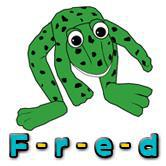
We use pure sounds (‘m’ not’ muh’,’s’ not ‘suh’, etc.) so that your child will be able to blend the sounds into words more easily.
At school we use a puppet called Fred who is an expert on sounding out words! we call it, ‘Fred Talk’. E.g. m-o-p, c-a-t, m-a-n, sh-o-p, b-l-a-ck.
The children are taught the sounds in 3 sets.
Step 1:
Set 1 Sounds are taught in the following order together with rhymes to help children form the letters correctly and instantly recognise sounds ready for blending.
| Set 1 | |
| Sound | Rhyme |
| m | Down Maisie then over the two mountains. Maisie, mountain, mountain. |
| a | Round the apple, down the leaf. |
| s | Slide around the snake |
| d | Round the dinosaur’s back, up his neck and down to his feet. |
| t | Down the tower, across the tower, |
| i | Down the insects body, dot for the head. |
| n | Down Nobby and over the net. |
| p | Down the plait, up and over the pirates face. |
| g | Round the girls face, down her hair and give her a curl |
| o | All around the orange |
| c | Curl around the caterpillar |
| k | Down the kangaroos body, tail and leg |
| u | Down and under the umbrella, up to the top and down to the puddle |
| b | Down the laces, over the toe and touch the heel |
| f | Down the stem and draw the leaves |
| e | Slice into the egg, go over the top, then under the egg |
| l | Down the long leg |
| h | Down the horse’s head to the hooves and over his back |
| sh | Slither down the snake, then down the horse’s head to the hooves and over his back |
| r | Down the robot’s back, then up and curl |
| j | Down his body, curl and dot |
| v | Down a wing, up a wing |
| y | Down a horn, up a horn and under the yak’s head. |
| w | Down, up, down, up the worm. |
| th | Down the tower, across the tower, then down the horse’s head to the hooves and over his back |
| z | Zig-zag-zig, down the zip. |
| ch | Curl around the caterpillar, , then down the horse’s head to the hooves and over his back |
| qu | Round the queen’s head, up to her crown, down her hair and curl |
| x | Cross down the arm and leg and cross the other way |
| ng | A thing on a string |
| nk | I think I stink |
Please do not use letter names at this early stage.
Children will also use pictures for each sound to help recognise the sound and then form the shape of the sound.
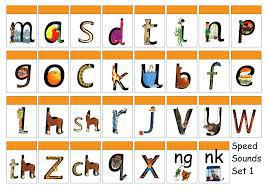
Step 2:
The children are then taught Set 2 Sounds – the long vowels. When they are very confident with all of set 1 and 2 they are taught Set 3 Sounds.
| Long vowel sound | Set 2 Speed Sound cards | Set 3 Speed Sound cards | |
| ay | ay: may I play | a-e: make a cake | ai: snail in the rain |
| ee | ee: what can you see | ea: cup of tea | e: he me we she be |
| igh | igh: fly high | i-e: nice smile | |
| ow | ow: blow the snow | o-e: phone home | ao: goat in a boat |
| oo | oo: poo at the zoo | u-e: huge brute | ew: chew the stew |
| oo | oo: look at a book | ||
| ar | ar: start the car | ||
| or | or: shut the door | aw: yawn at dawn | |
| air | air: that’s not fair | are: share and care | |
| ir | ir: whirl and twirl | ur: nurse for a purse | er: a better letter |
| ou | ou: shout it out | ow: brown cow | |
| oy | oy: toy for a boy | oi: spoil the boy | |
| ire | ire: fire fire! | ||
| ear | ear: hear with your ear | ||
| ure | ure: sure it’s pure? |
Nonsense words (Alien words)
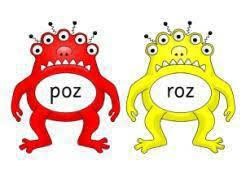
As well as learning to read and blend real words children will have plenty of opportunities to apply their sound recognition skills on reading ‘Nonsense words’. These words will also feature heavily in the Year One Phonics Screening Check in the summer term.
What is the Year 1 phonics screening check?
The Year 1 Phonics Screening Check is a short, light-touch assessment to confirm whether individual children have learnt phonic decoding to an appropriate standard. It will identify the children who need extra help so they are given support by their school to improve their reading skills. They will then be able to retake the check in Y2 so that schools can track children until they are able to decode.
Step 3:
Children will be introduced to ‘Ditty books’ when they successfully begin to read single words. The short vowels should be kept short and sharp:
Children use sound-blending (Fred Talk) to read short ditties.
Within all the books children will have red and green words to learn to help them to become speedy readers. Red words are words that are not easily decodable and challenge words to extend children’s vocabulary. Green words are linked to the sounds they have been learning and are easily decodable.
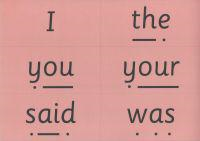 | 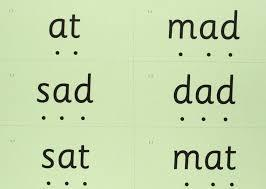 |
Dots and dashes represent the sound each letter makes.
Once your child has been introduced and taught these words in school we will send them home for you to continue practising with your child.
Spelling Quiz
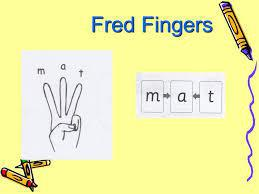
A spelling quiz will be held each week (This will only start in Reception when children are ready to write and form their letters). Children will use first use ‘Fred fingers’ to first sound out a word before they write it down. Children learn how to spell rather than just get tested. Furthermore, this way of teaching spellings allows children to use Fred fingers whenever they get stuck with spelling a word. Children pinch each sound on fingers before writing the word.
You can learn more about Read Write Inc (RWI) Phonics Programme RWI by accessing the following website:
To help at home:
Your child will start to bring books home when they are confident readers. Please help them to read and give lots of praise!
Book Bag Books give your child extra practice in reading stories that include sounds that he or she has learnt at school.
How to help your child read their Book Bag Book
